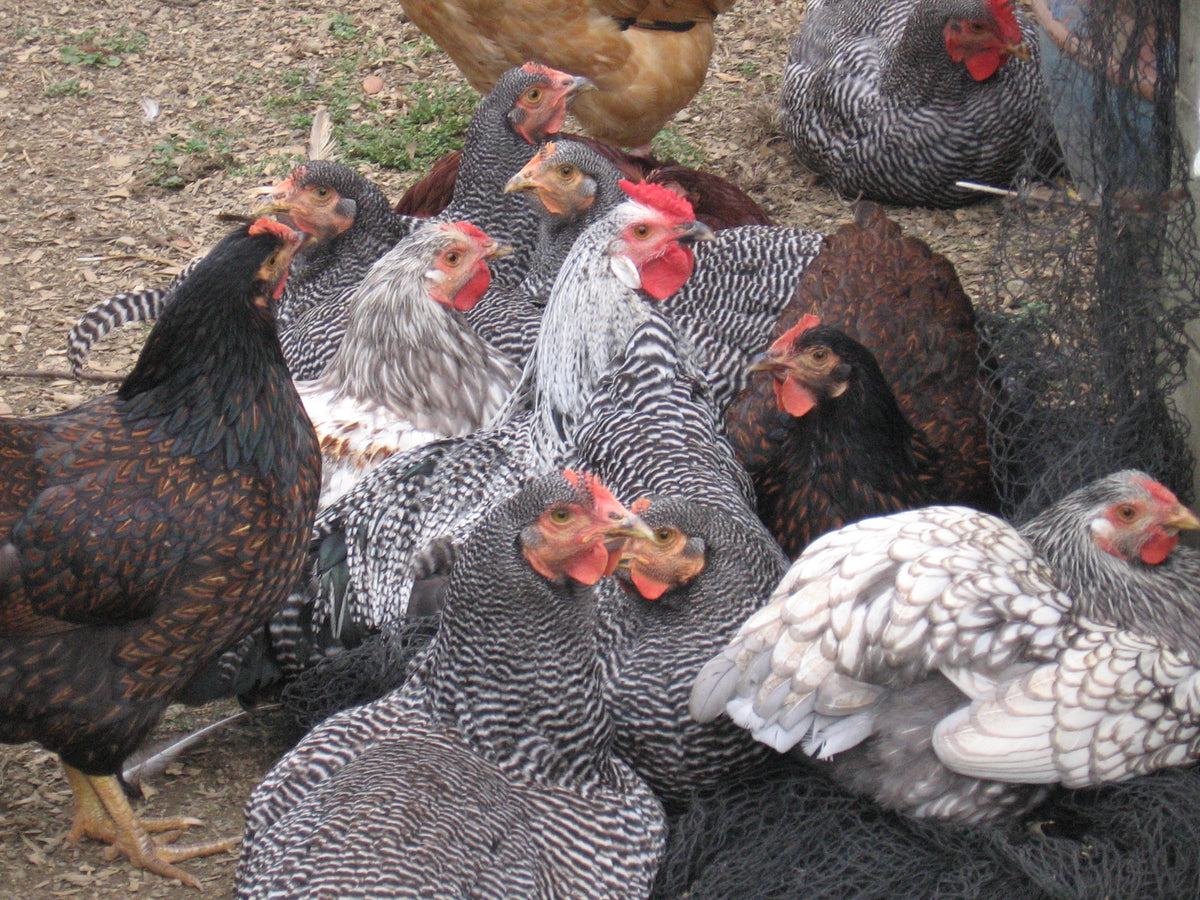How to Tell the Boys ♂️ from the Girls ♀️
Saturday, 29th January 2022
Five Easy Ways to Spot the Visual Difference Between a Rooster and a Hen
#1. Hackle Feathers
When we look at determining the sex of a chicken, this is called sexing. One way to do this is by looking at their feathers, their hackle feathers in particular. Hackle feathers are the type of feathers that you’ll find around a chicken’s neck, with the appearance differing between males and females. Something you’ll notice is that male chickens have long, pointy, and thin hackles; sometimes these can have a glossy sheen to them as well. These hackles feathers in males can often stand up. This is so that they can make themselves appear bigger when they are facing an opponent. Female hackles, on the other hand, are smaller, rounder, and softer.
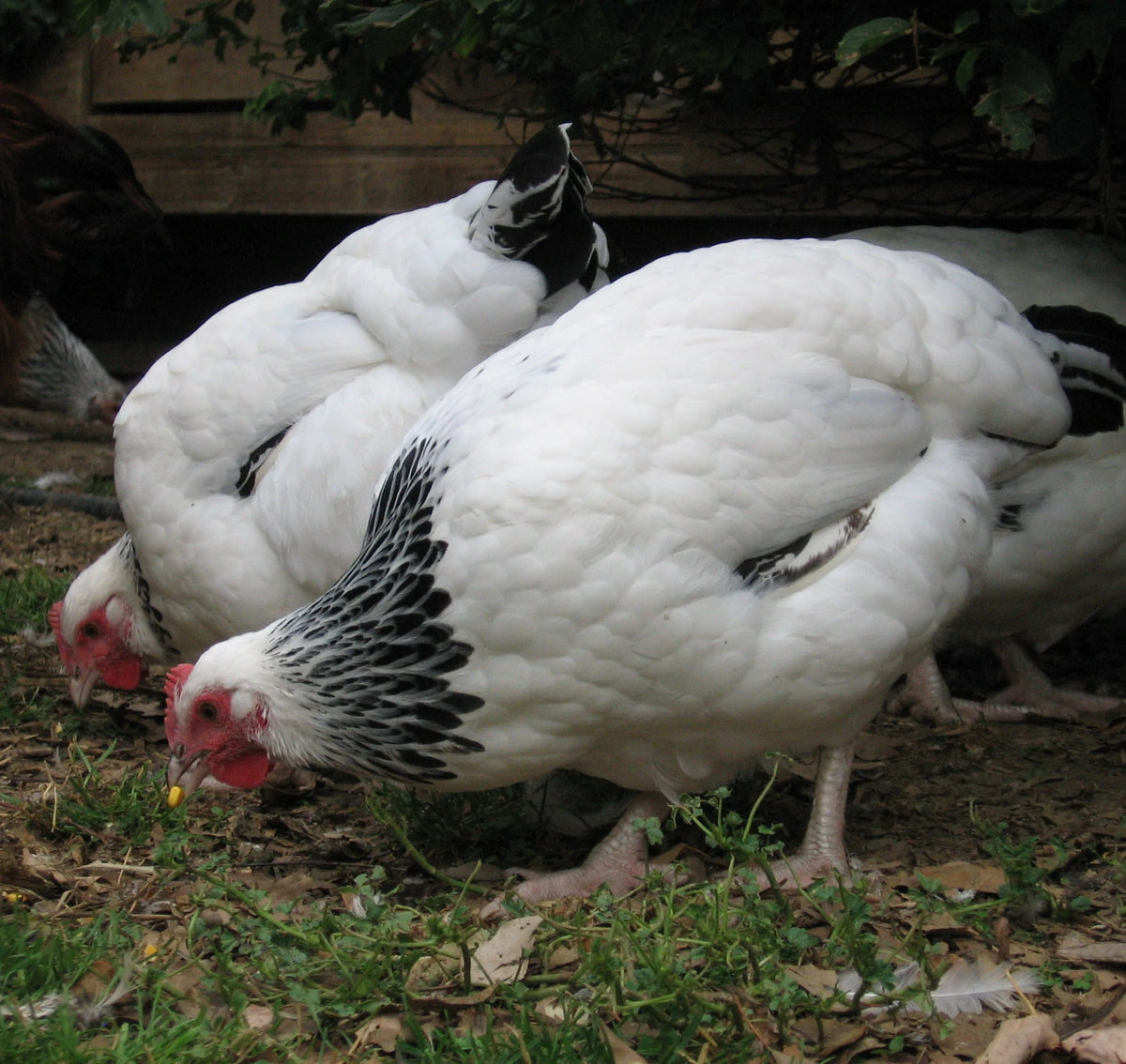
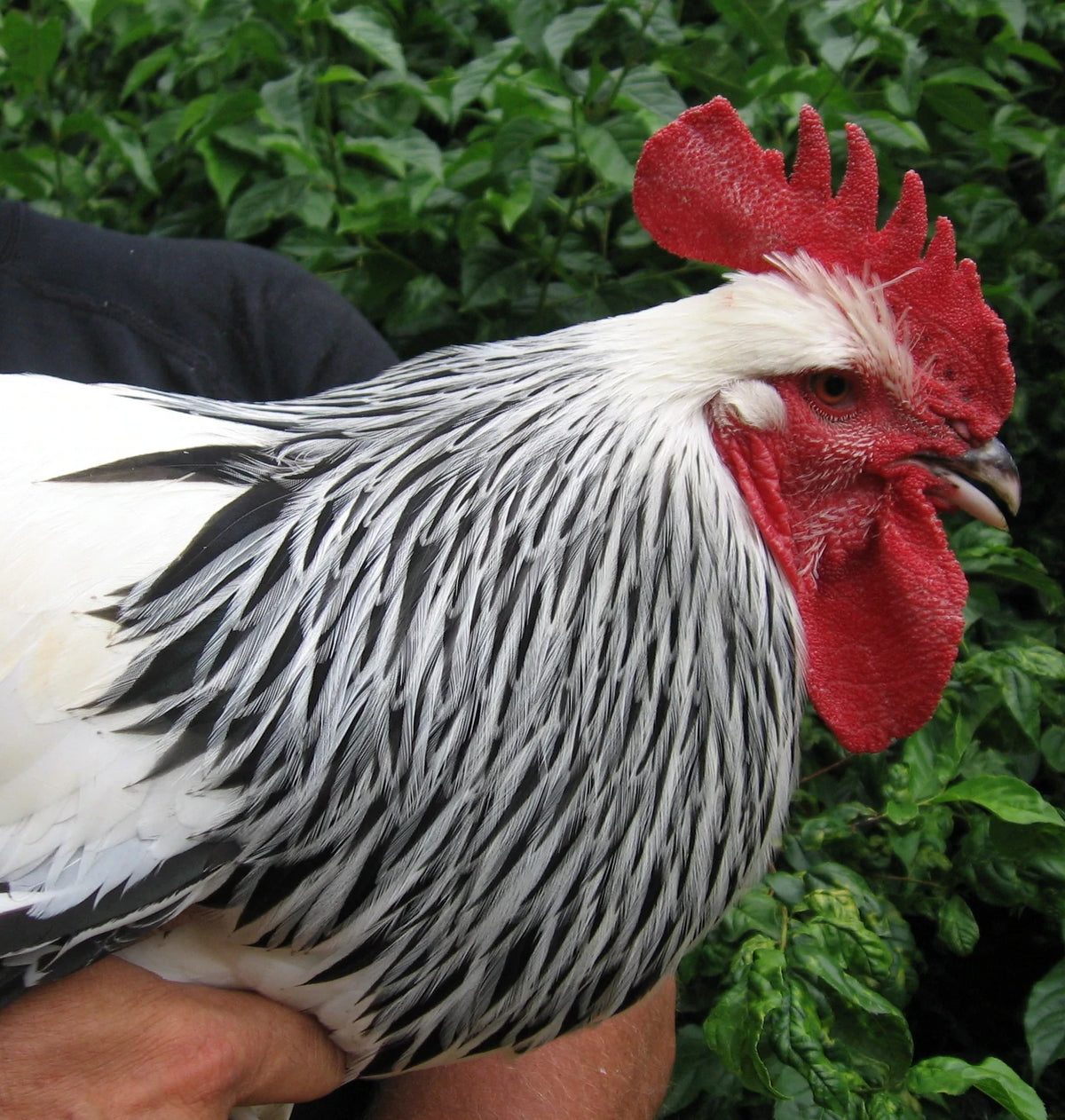
Notice the soft, rounded curve of the hackle feathers on these Light Sussex pullets compared to the pointy, longer ones on the rooster.
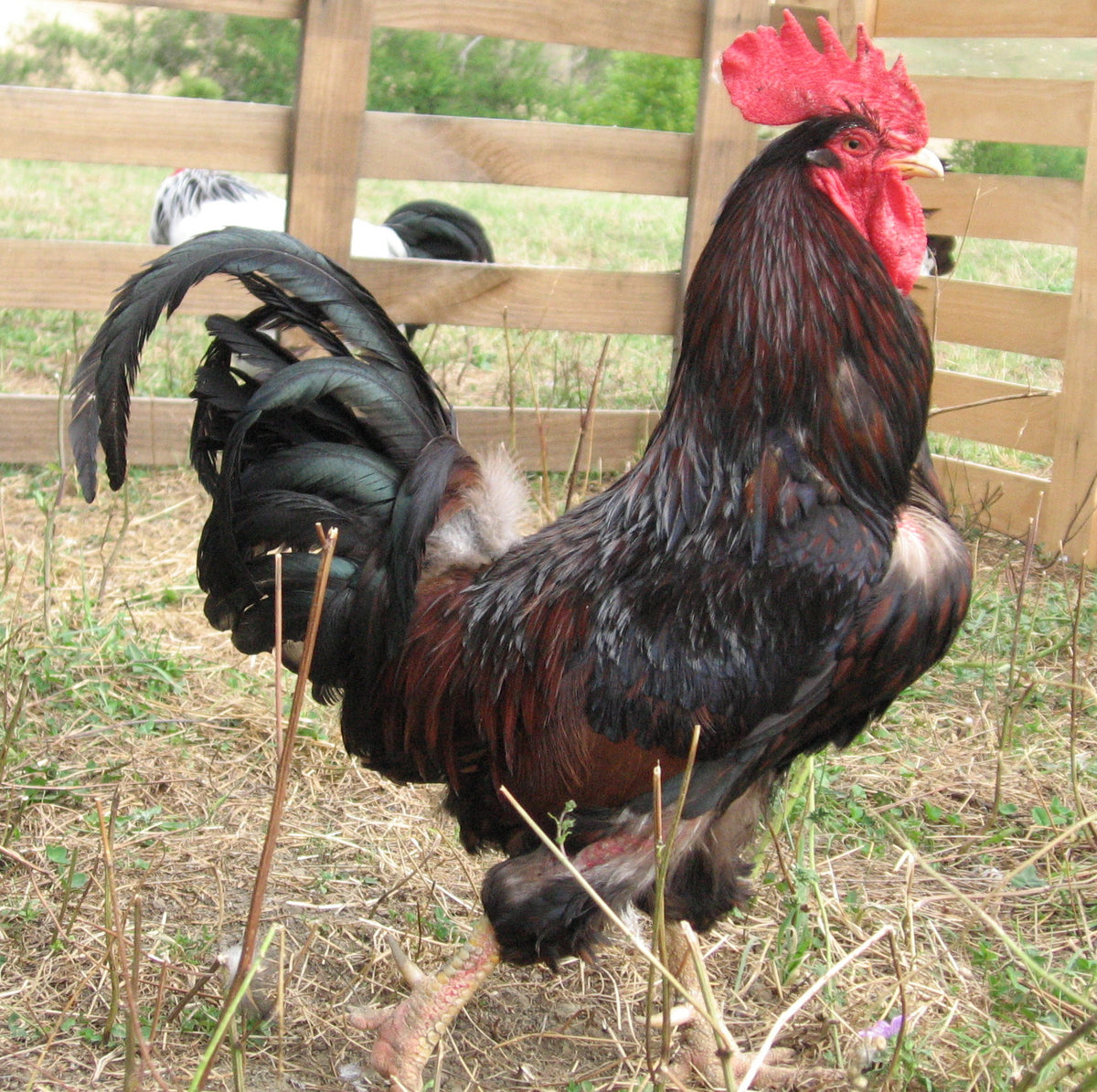
This Barnevelder Rooster has an impressive rooster tail compared to his female counterpart which shows a typical hen tail.
#2. Tail
Looking at the tail feathers of your birds is another way to distinguish between a male and female chicken. Saddle feathers are a type of tail feather, which extend on from a chicken’s back and actually sit in front of the tail. Whilst both hens and cockerels have saddle feathers, with female chickens, these are rounder than the saddle feathers of male chickens, which are not only longer, but also more pointed. Next we have sickle feathers, which hens do not have. These are the long, arched feathers which you find sticking out from a rooster’s tail.
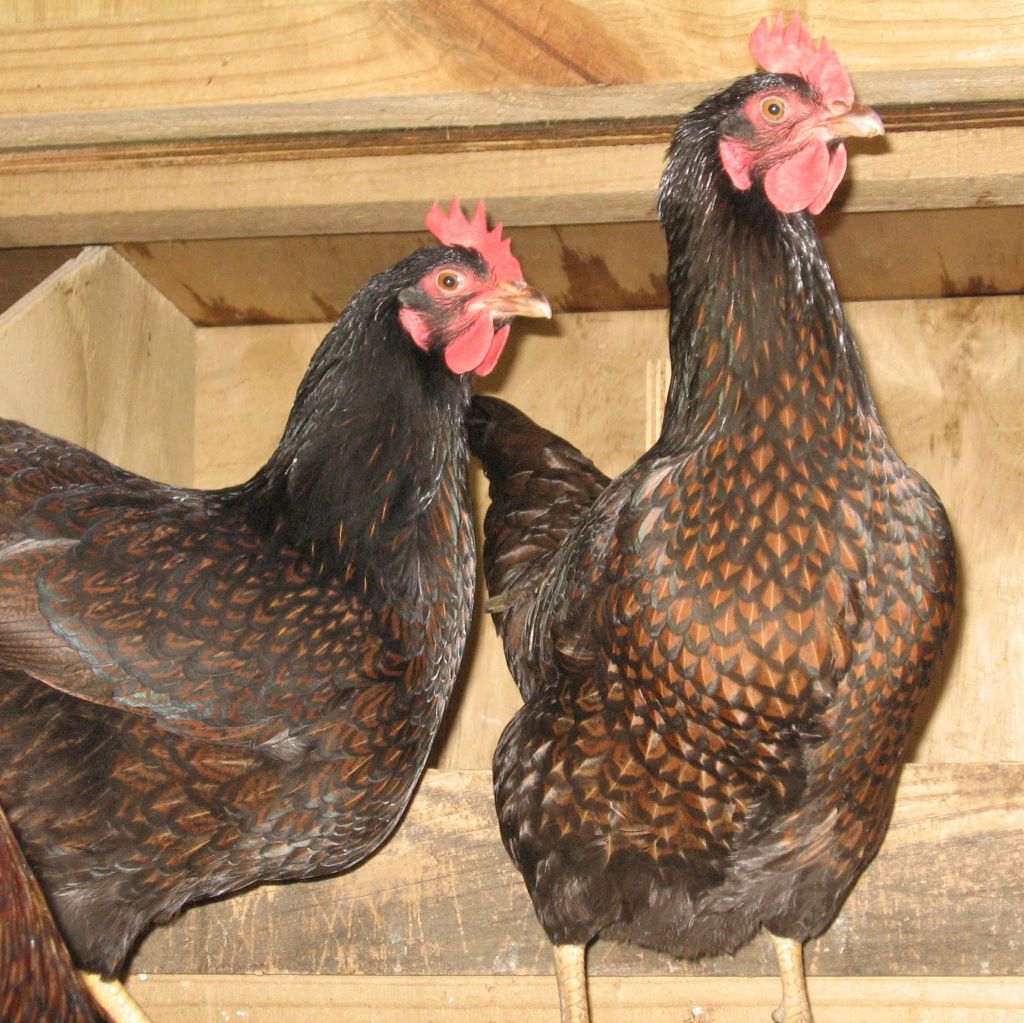
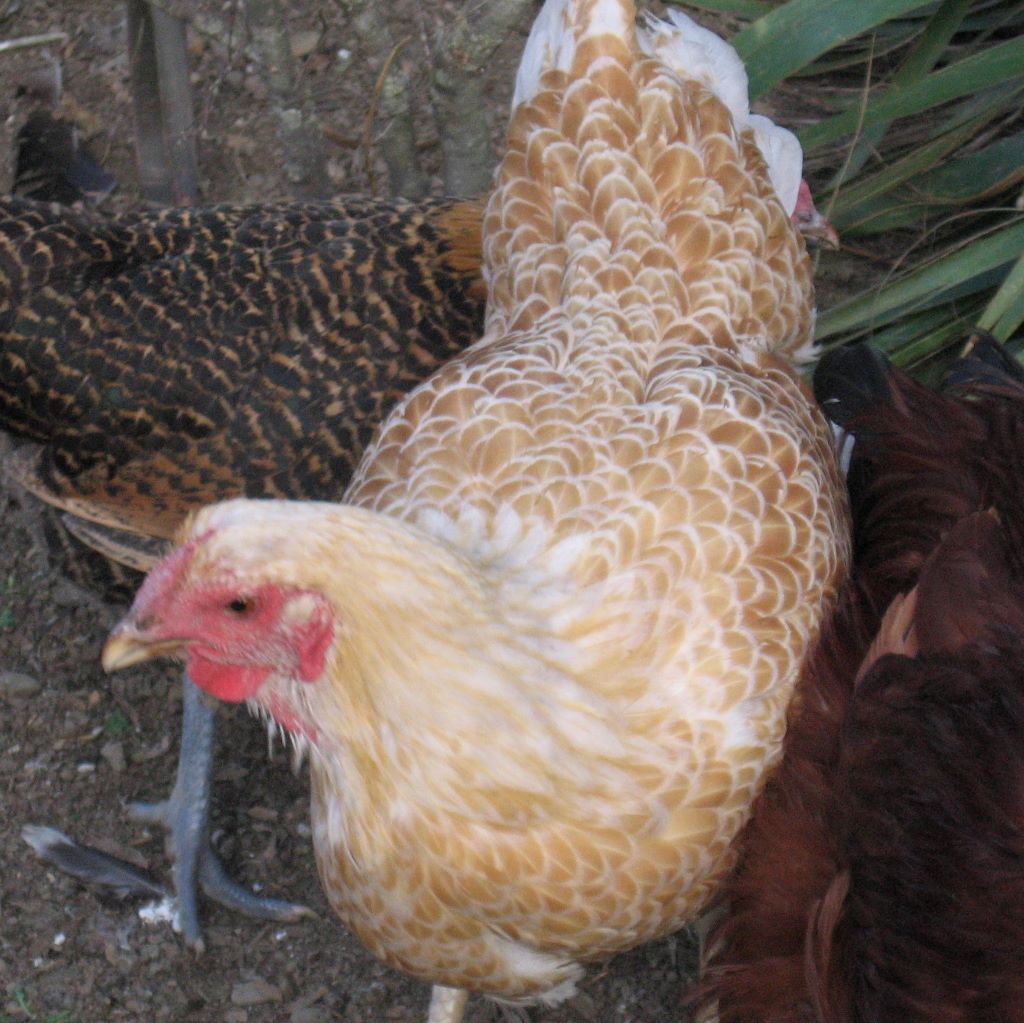
Notice the softer, curved full saddle feathers on this Buff Laced Wyandotte pullet.
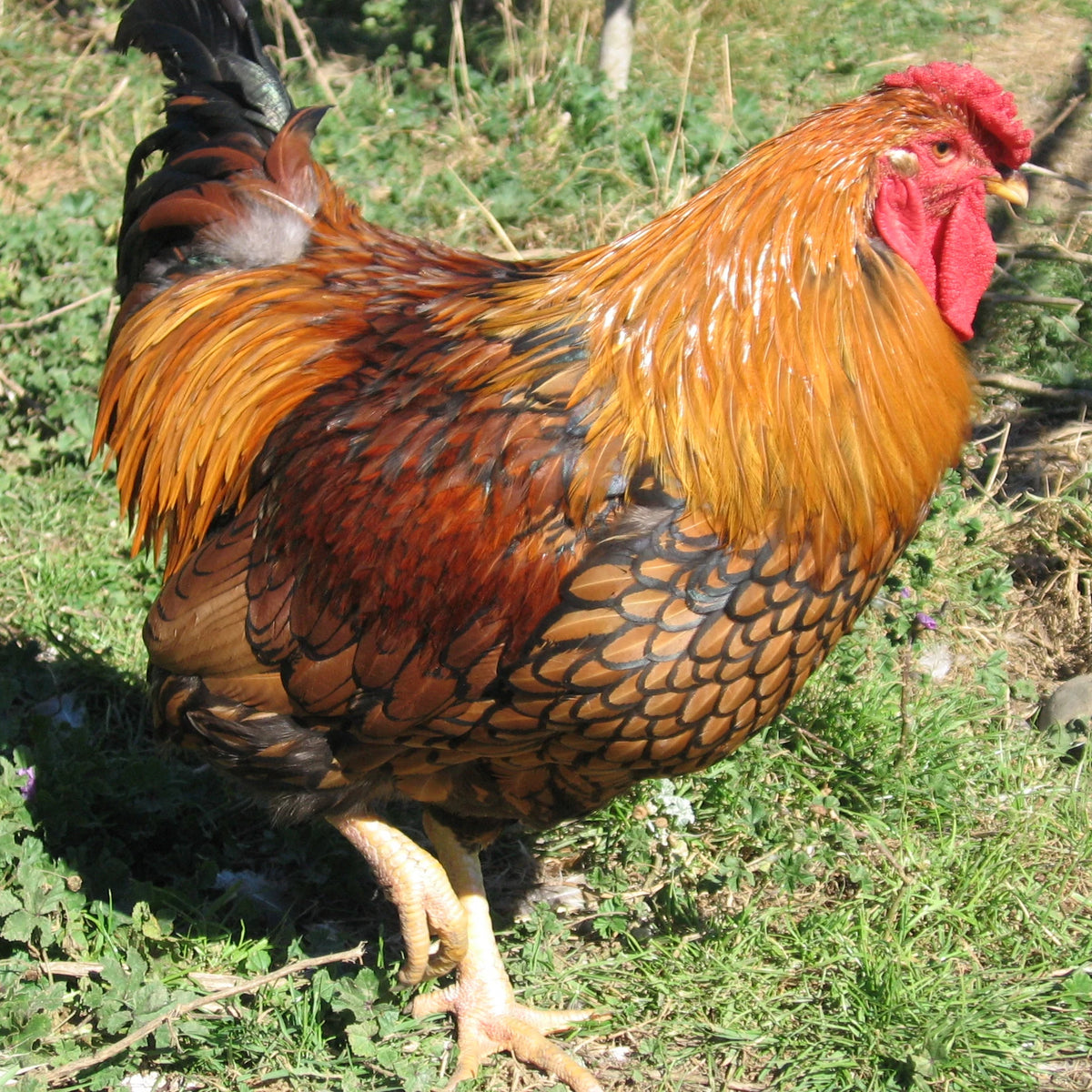
Spot the shiny, long, spiky saddle feathers on this young Gold Laced Wyandotte rooster.

This maturing Buff Laced Wyandotte rooster is starting to grow his sickle feathers, he also has spiky saddle feathers.
#3. Legs and Feet
Roosters tend to have sturdier, thicker legs, which are actually to serve the purpose of fighting when they need to defend their flock. We’ll look at behavioural differences more later on in the blog. Spur growth, a part of the leg bone which resembles a horn, could also be another indication of whether you have a rooster or a hen. These are found on the back of chickens’ legs, and whilst not exclusively being a physical attribute of male chickens, these are a lot more common to find on roosters as opposed to hens. The spurs on a male chicken can be inches long and are sharper than those you’d see on a female, should she have any growth at all. Young cockerels start to show a small spur and as they mature this spur gets longer with age. We do not recommend cutting or shortening spurs but if really sharp you can blunt the end with a file.
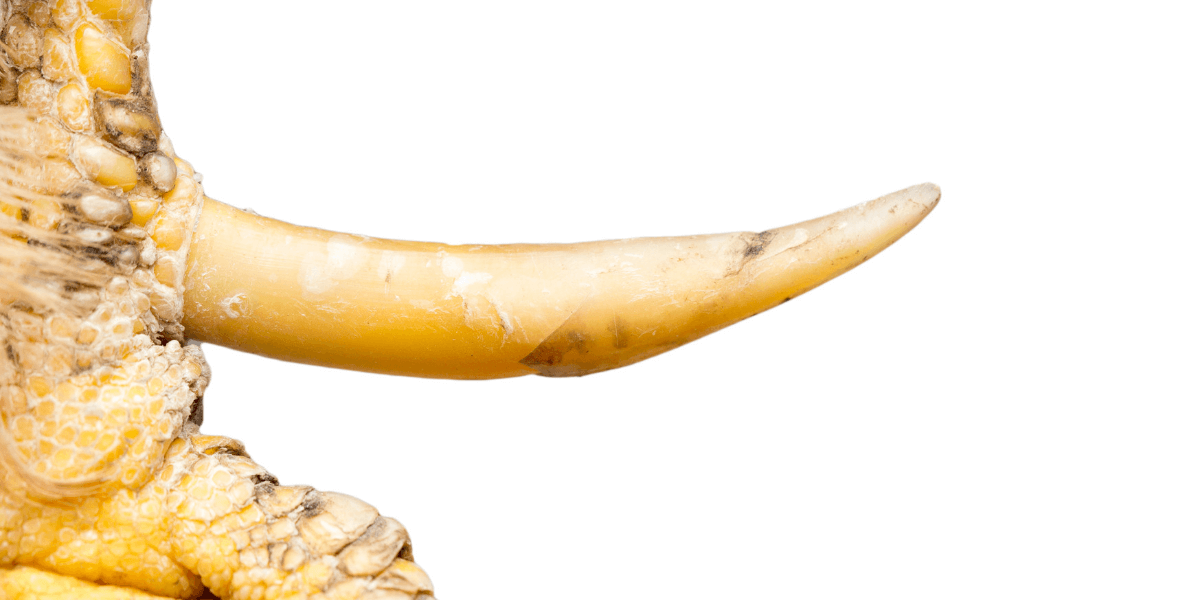
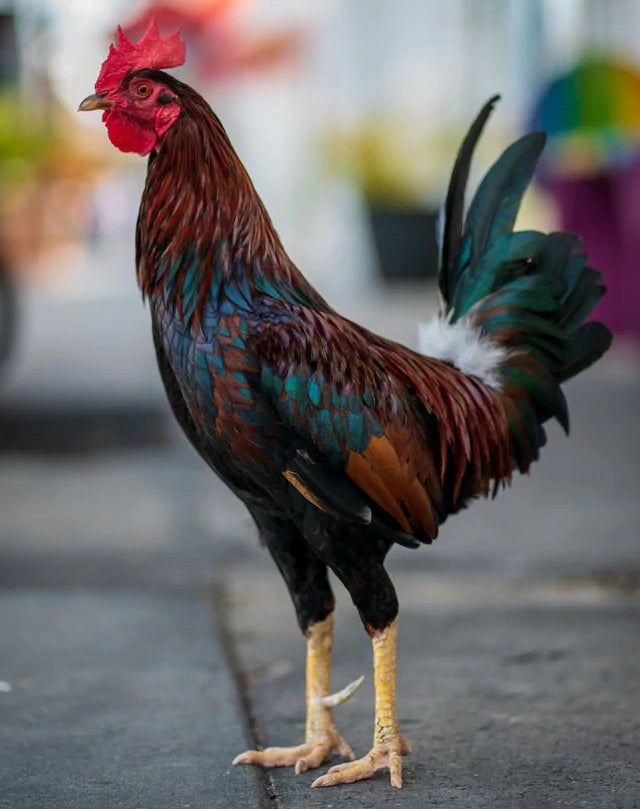
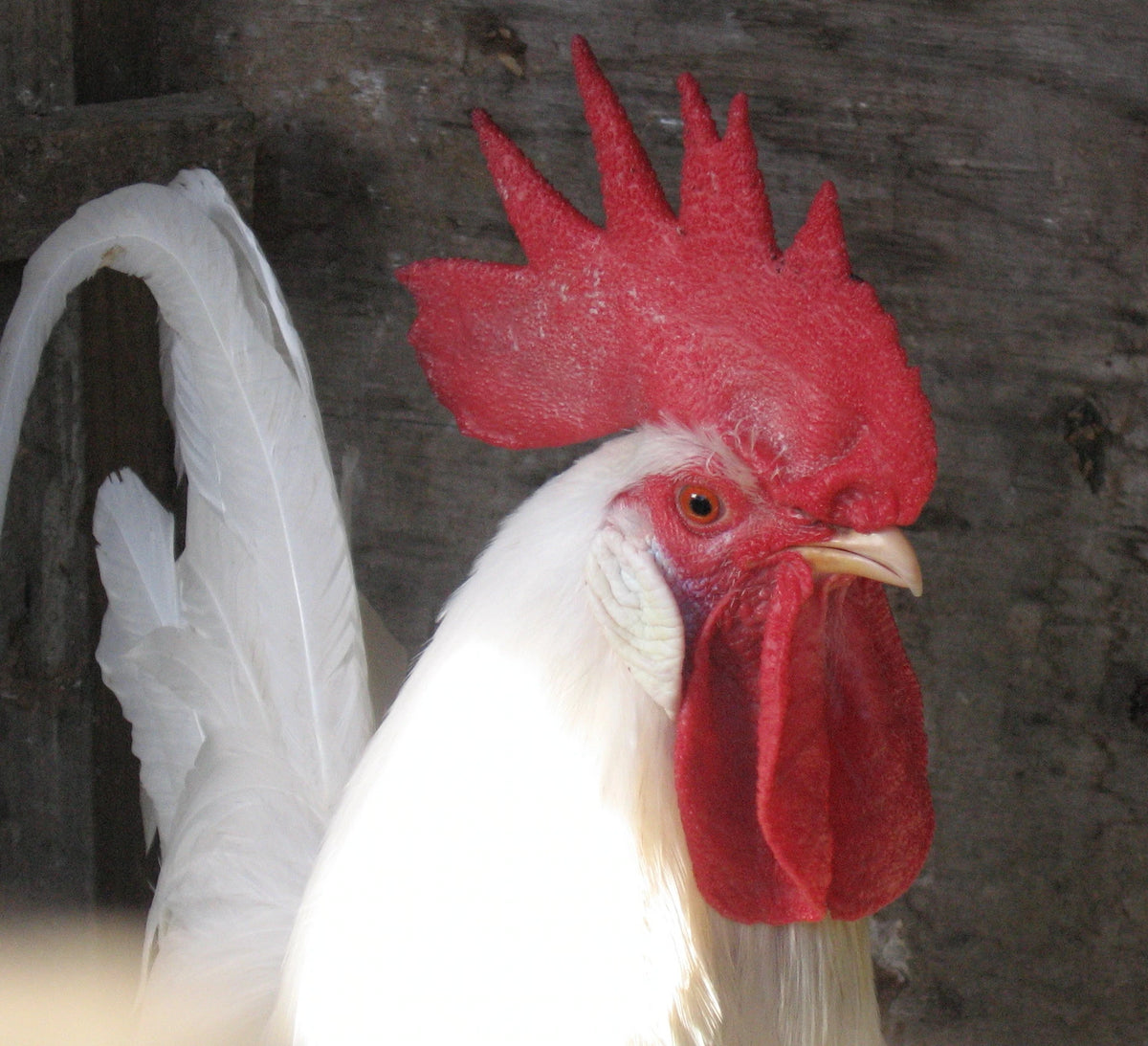
Spot the visible difference between the male and the female combs and wattles in the photo of the two White Leghorns.
#4. Combs and Wattles
Hens and roosters both have combs and wattles, with the comb being located at the top of a chicken’s head, and the wattles hanging below their chin. The appearance of a chicken’s comb and wattle will differ between breeds, however generally speaking, you can sex a chick by looking at their comb. This is because whilst hens and roosters have red combs, a hen’s comb is not as bright or large as a rooster’s, which is vibrant and will feel waxy to touch. When it comes to wattles, hens’ are smaller in size than the wattle you’ll see on a rooster. Just as the comb, a rooster’s wattle will also be brighter in colour than a hen’s.

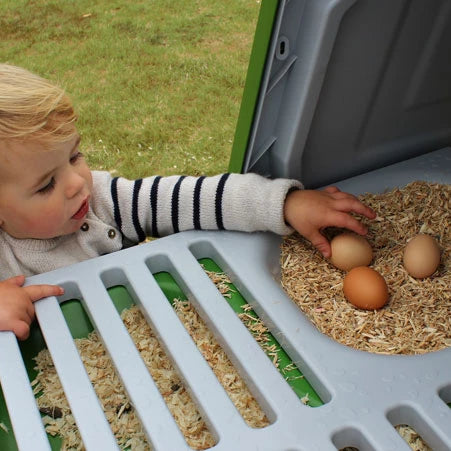
#5. Laying Eggs?
Egg laying is one sure way to know whether you have a male or female chicken! If you notice that your chicken is laying eggs, regardless of whether their other physical or behavioural traits have said otherwise, then your chicken is most definitely a hen!

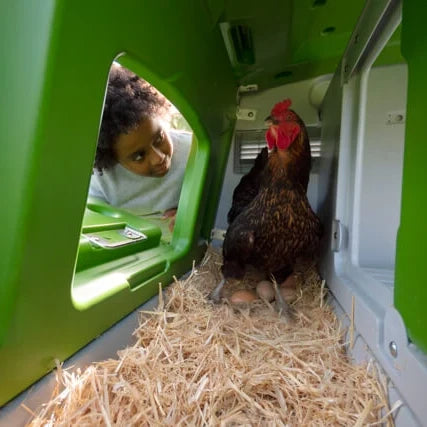
What are the Behavioural Differences Between a Hen and a Cockerel?
We’ve looked at the physical difference between hens and cockerels, but what are the different behavioural traits that will help you to sex your chickens? One big difference when looking at how to tell a cockerel from a hen is with vocalisations, or how your chickens communicate via the sounds they make. Cockerels are notorious for their usually very noisy cock-a-doodle-doo crow! They begin to crow at around five months old, or when they have matured, and do so for a number of reasons. This can be to announce their dominant presence, to mark their territory, or even as a mating ritual. Whilst it’s definitely not impossible for a hen to crow, it’s a lot less common, and should they do so, it’s often a lot quieter as well. If a female chicken does begin to crow, this is usually because they are at top of the pecking order or will occur in the absence of a rooster in the flock when you previously had one. You may also notice differences in the levels of aggression between cockerels and hens. Unfortunately, bullying amongst chickens is not that uncommon and can happen for a multitude of reasons. Whilst this behaviour is not exclusive to male chickens, roosters are said to always have an eye out for danger, ready to fight to protect their flock. Usually being top of the pecking order, roosters like to assert their dominance by fighting with other roosters to try and show who’s boss! As with the other physical differences pointed out, how aggressive your chickens are can also depend on their breed. Certain breeds such as the Asil, Modern Game, and Old English Game for example, all rank top of the list of some of the least friendly chicken breeds!
Choosing The Right Chicken BreedFrom What Age Can You Tell the Difference Between a Hen and a Cockerel?
It doesn’t matter if you’re buying, selling or simply looking to sort new chicks into your flock.
Being able to accurately sex a chicken while it’s still young is a very important skill to have. It’s also very hard to do!
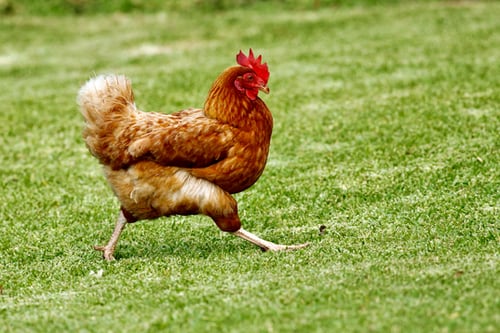
Can Hens Turn into Cockerels?
As bizarre as this question may sound, there have been a number of documented cases of chicken keepers claiming that their chickens have changed sex! From the offset, the answer to this question is no – hens most definitely cannot genetically turn into cockerels, nor can cockerels turn into hens. However, what can occur in very rare circumstances, is when a hen takes on the characteristics of a cockerel as a result of complications with her ovaries. Hens are born with two ovaries – the left organ is responsible for producing eggs and estrogen, whilst the right, on the other hand, becomes dormant when a chick is hatched. Should the female chicken encounter a medical issue such as an ovarian cyst, testosterone levels will begin to rise, and the left ovary can shrink, which causes the development of an avo-testis. At this point, your hen will stop laying eggs and can even take on the appearance of a male chicken such as a more established comb and wattle!






